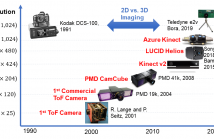
- Read more about Raw Data Processing for Practical Time-of-Flight Super-Resolution
- Log in to post comments
The relatively low resolution of Time-of-Flight (ToF) cameras, together with high power consumption and motion artifacts due to long exposure times, have kept ToF sensors away from classical lidar application fields, such as mobile robotics and autonomous driving. In this paper we note that while attempting to address the last two issues, e. g., via burst mode, the lateral resolution can be effectively increased. Differently from prior approaches, we propose a stripped-down modular super-resolution framework that operates in the raw data domain.
- Categories:
 28 Views
28 Views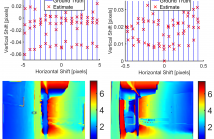
- Read more about Raw Data Processing for Practical Time-of-Flight Super-Resolution
- Log in to post comments
The relatively low resolution of Time-of-Flight (ToF) cameras, together with high power consumption and motion artifacts due to long exposure times, have kept ToF sensors away from classical lidar application fields, such as mobile robotics and autonomous driving. In this paper we note that while attempting to address the last two issues, e. g., via burst mode, the lateral resolution can be effectively increased. Differently from prior approaches, we propose a stripped-down modular super-resolution framework that operates in the raw data domain.
- Categories:
 32 Views
32 Views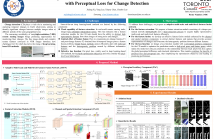
- Read more about An Adaptive Multi-Scale and Multi-Level Features Fusion Network with Perceptual Loss for Change Detection
- Log in to post comments
Change detection plays a vital role in monitoring and analyzing temporal changes in Earth observation tasks. This paper proposes a novel adaptive multi-scale and multi-level features fusion network for change detection in very-high-resolution bi-temporal remote sensing images. The proposed approach has three advantages. Firstly, it excels in abstracting high-level representations empowered by a highly effective feature extraction module.
MFPNet_poster.pdf
- Categories:
 28 Views
28 Views
- Read more about Bridging Unpaired Facial Photos and Sketches by Line-drawings
- Log in to post comments
- Categories:
 7 Views
7 Views
- Read more about SYNERGIC FEATURE ATTENTION FOR IMAGE RESTORATION
- Log in to post comments
- Categories:
 11 Views
11 Views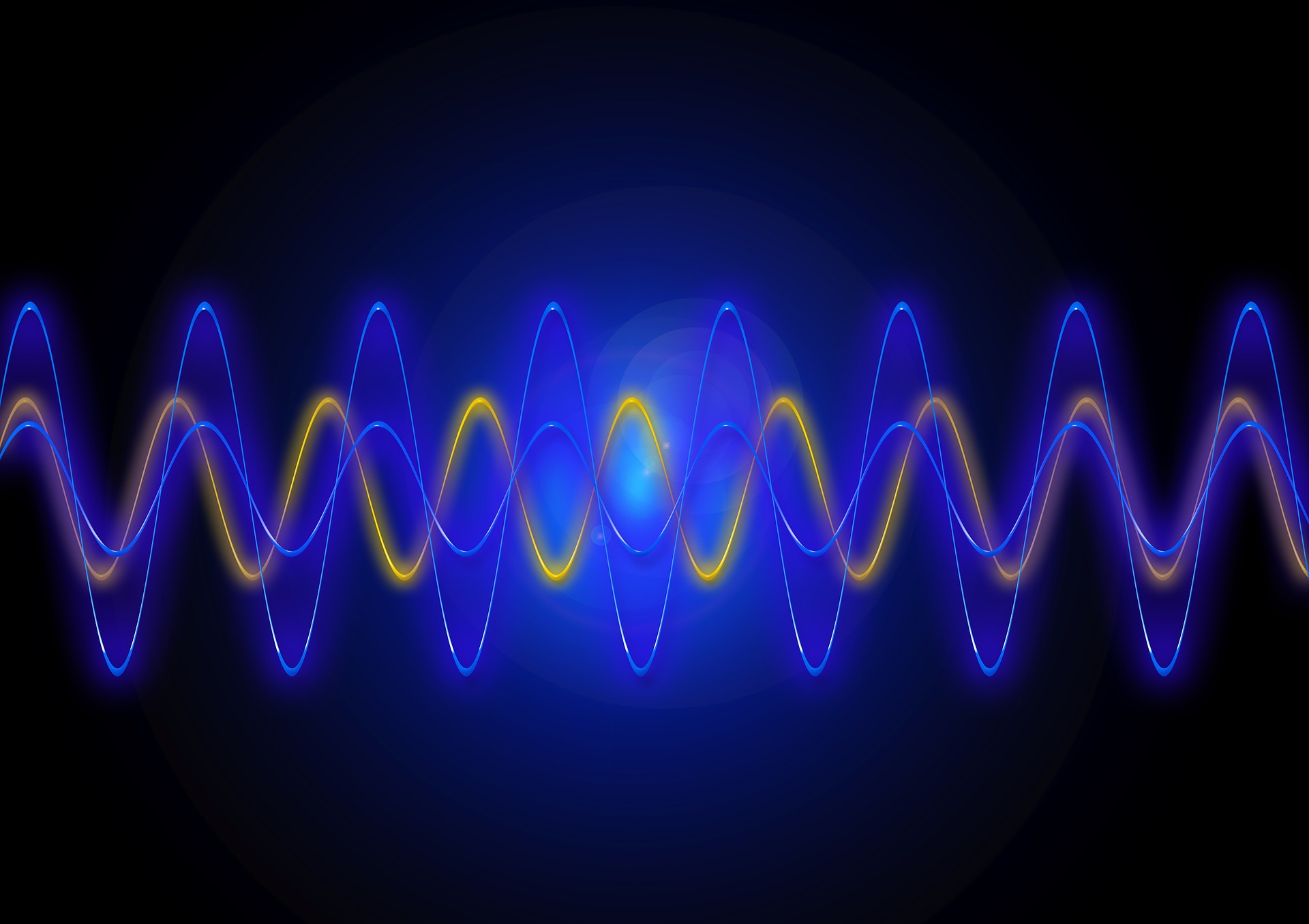
- Read more about A RANK-CONSTRAINED CLUSTERING ALGORITHM WITH ADAPTIVE EMBEDDING
- Log in to post comments
report.pdf
- Categories:
 3 Views
3 Views
- Read more about DUAL-STREAM NETWORK BASED ON GLOBAL GUIDANCE FOR SALIENT OBJECT DETECTION
- Log in to post comments
High-level features can help low-level features eliminate semantic ambiguity, which is crucial for obtaining the precise salient object. Some methods use high-level features to pro vide global guidance for some layers of the network. However, there remain several problems: (1) the global guidance has not been fully mined, which leads to its limited capacity; (2) the semantic gap between global guidance and lowlevel features is ignored, and simple merging methods will cause feature aliasing.
icassp海报.pdf
- Categories:
 7 Views
7 Views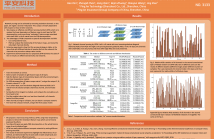
- Read more about NETWORK PRUNING USING LINEAR DEPENDENCY ANALYSIS ON FEATURE MAPS
- Log in to post comments
Network pruning can be achieved by removing redundant channels. In this paper, we regard a channel ‘redundant’ if its output is linearly dependent with respect to those of other channels. Inspired by this, we propose an efficient pruning method, named as LDFM, by linear dependency analysis on all the feature maps of each individual layer.
Poster.pdf
- Categories:
 20 Views
20 Views
- Read more about DUAL-STREAM NETWORK BASED ON GLOBAL GUIDANCE FOR SALIENT OBJECT DETECTION
- Log in to post comments
High-level features can help low-level features eliminate semantic ambiguity, which is crucial for obtaining the precise salient object. Some methods use high-level features to pro vide global guidance for some layers of the network. However, there remain several problems: (1) the global guidance has not been fully mined, which leads to its limited capacity; (2) the semantic gap between global guidance and lowlevel features is ignored, and simple merging methods will cause feature aliasing.
icassp海报.pdf
- Categories:
 7 Views
7 Views
- Read more about Exploiting the Dual-Tree Complex Wavelet Transform for Ship Wake Detection in SAR Imagery
- Log in to post comments
In this paper, we analyse synthetic aperture radar (SAR) images of the sea surface using an inverse problem formulation whereby Radon domain information is enhanced in order to accurately detect ship wakes. This is achieved by promoting linear features in the images. For the inverse problem-solving stage, we propose a penalty function, which combines the dual-tree complex wavelet transform (DT-CWT) with the non-convex Cauchy penalty function. The solution to this inverse problem is based on the forward-backward (FB) splitting algorithm to obtain enhanced images in the Radon domain.
- Categories:
 48 Views
48 Views